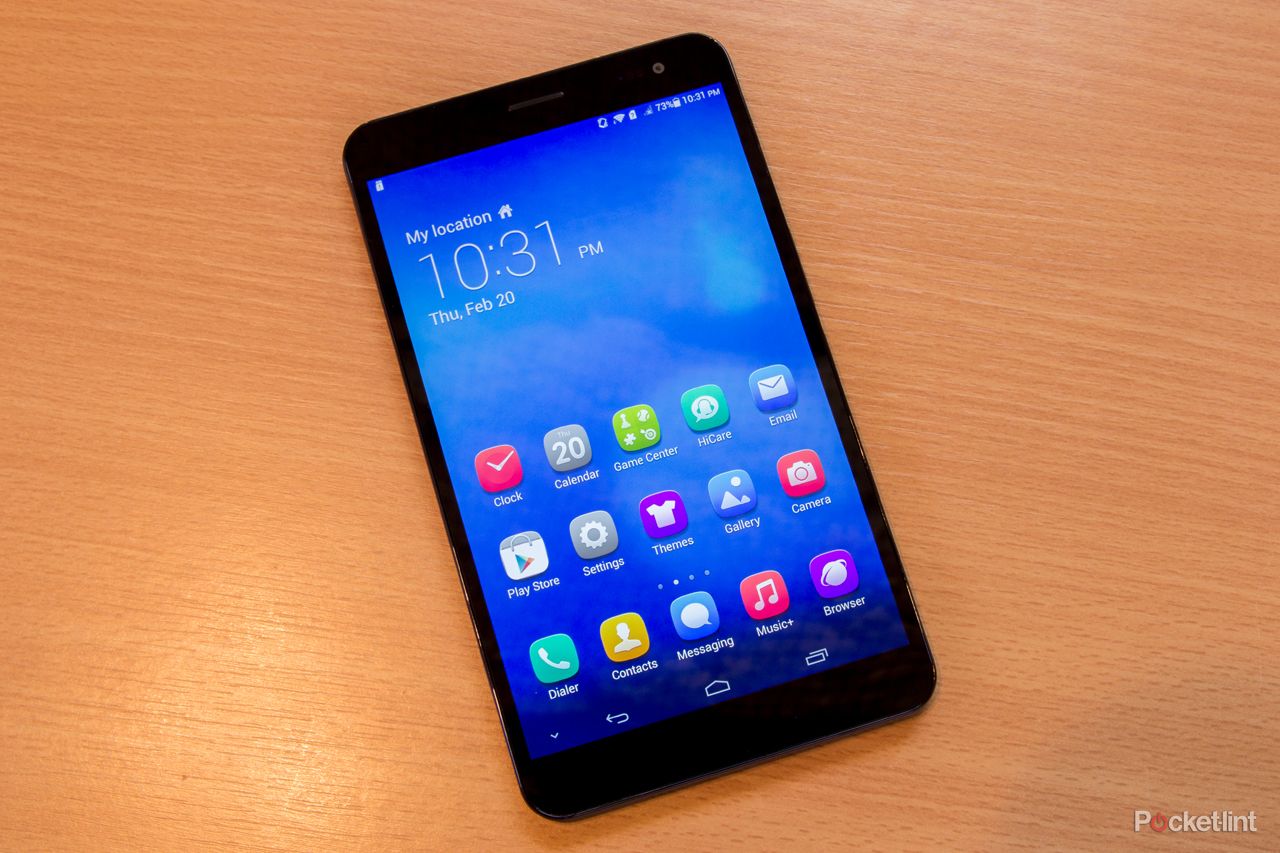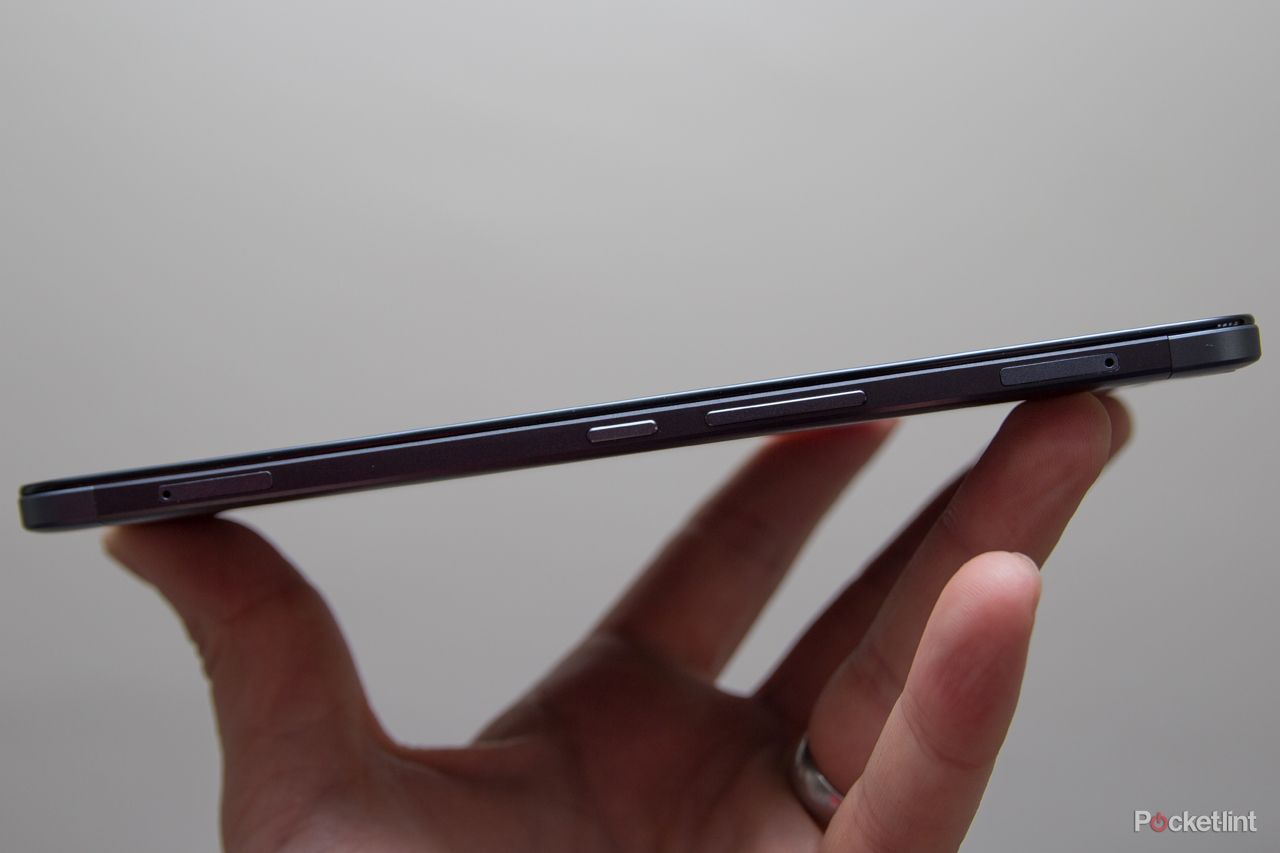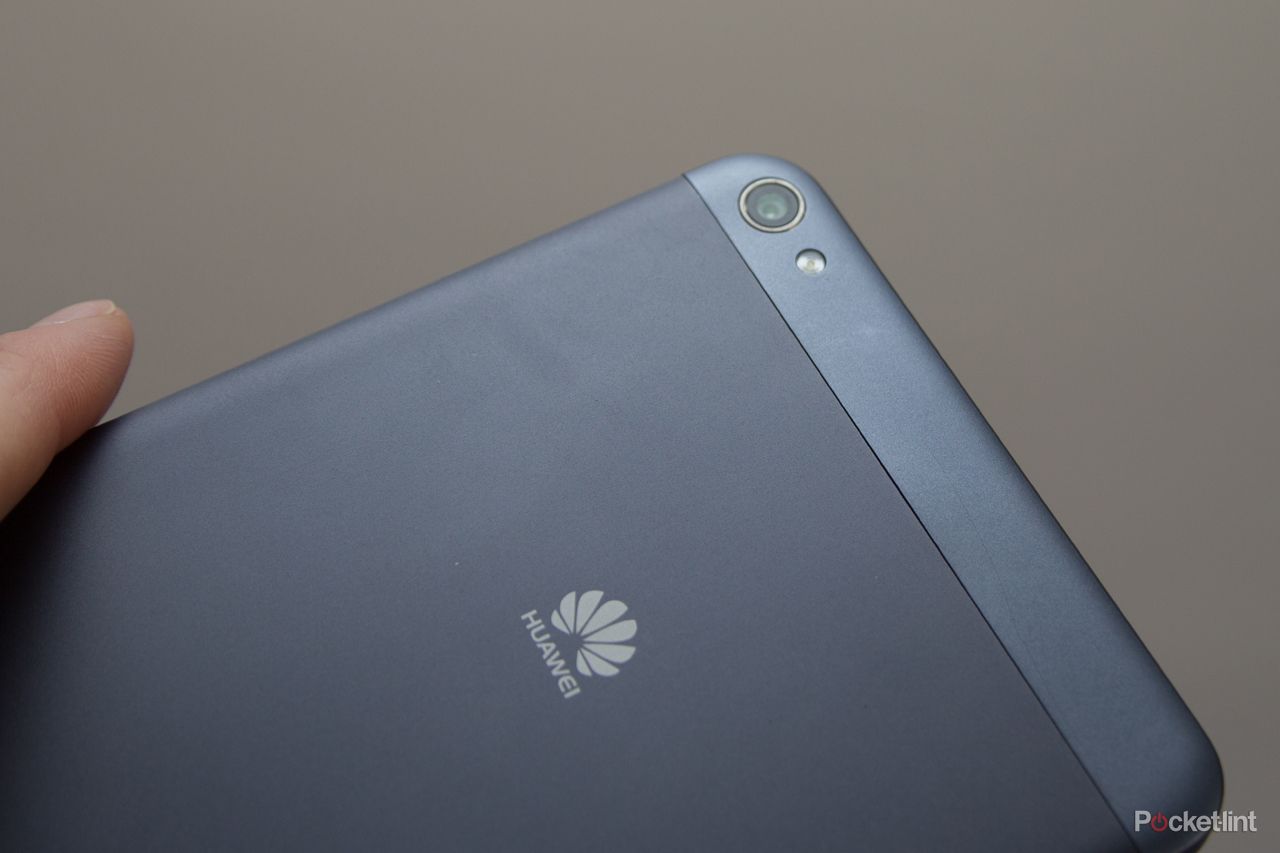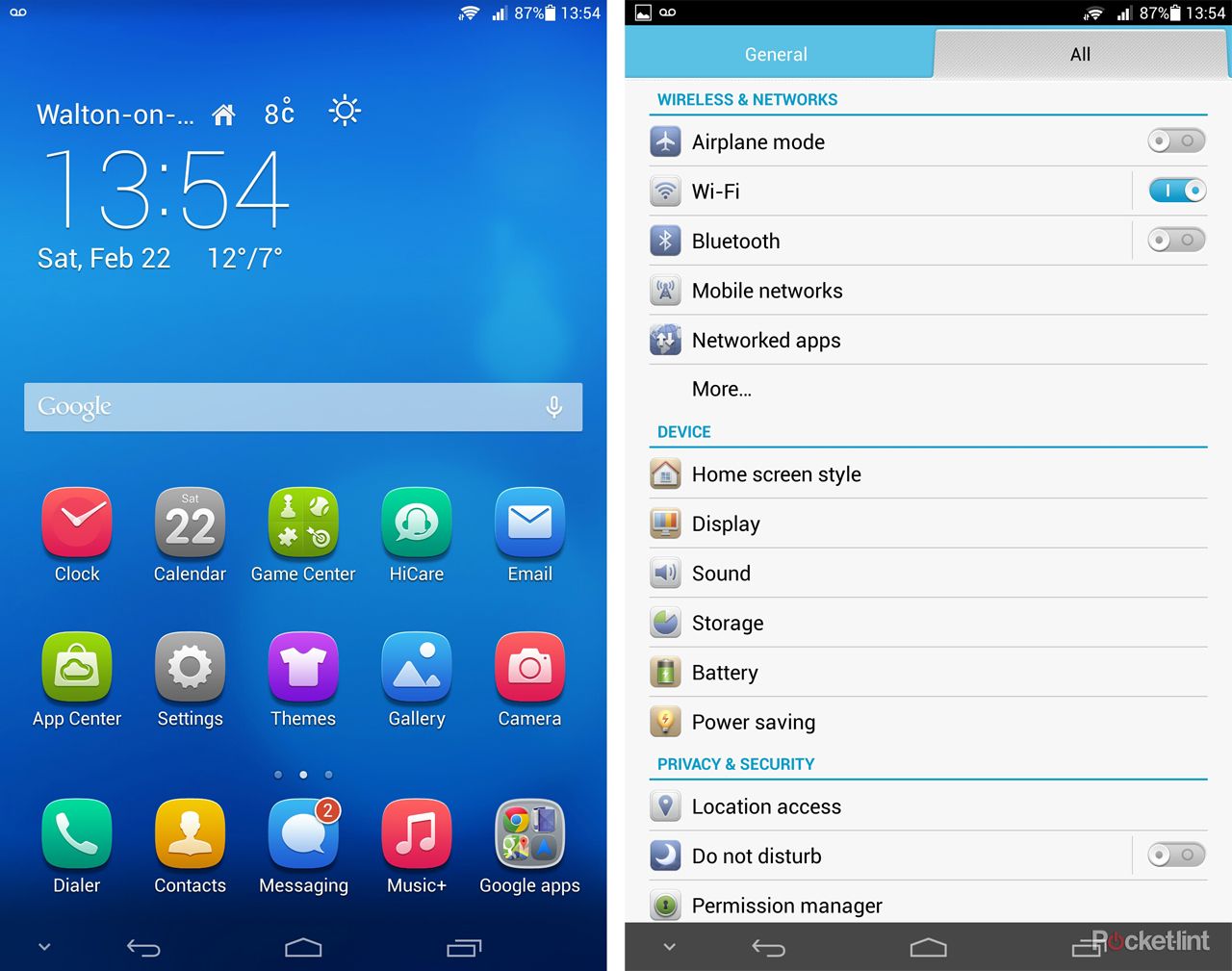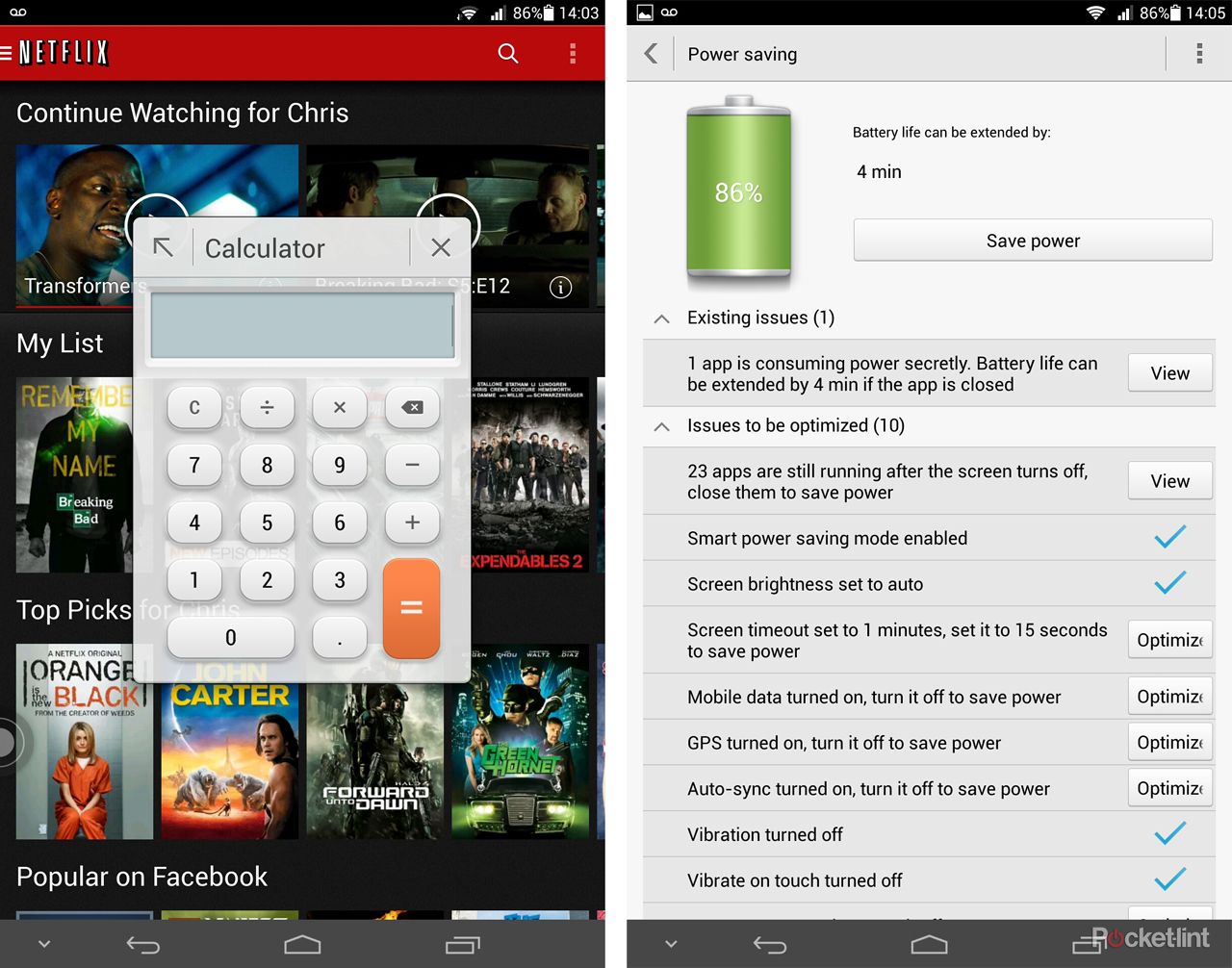With 7-inch tablets growing in popularity and falling in price, Huawei is bringing its most impressive device yet to the table with the Huawei MediaPad X1 7.0.
This 7-inch tablet, launched at Mobile World Congress 2014 on Sunday, looks to compete with devices like Google's Nexus 7, but brings full 4G LTE connectivity and phone functions, so it falls into the top end of the phablet line as much as it does the small tablet line.
We've been living with the Huawei MediaPad X1 7.0 for a few days. It's isn't final software, so we can't claim this as a full review of the new device, but we've had the chance to use it day in, day out.
Design and build
The Huawei MediaPad X1 7.0 exhibits strong design and is one of the best looking small tablets we've seen for a while. We like the Nexus 7, but think it's a little taller than it needs to be and we like the Tesco Hudl's bright colours, but there's something serious about the looks of the MediaPad X1 that we like.
READ: Tesco Hudl review
It has an aluminium unibody design that looks and feels great. It measures 183.5 x 103.9 x 7.18mm, so there's very little wasted space, but there's enough on the ends to grip, when watching a movie or playing games, for example. The slim profile means it's nice to grip, even if it's a little too large to use as a phone, even thought it has full phone capabilities.
There's a 3.5mm headphone socket on the top, and down the right-hand side there are trays for the SIM card and microSD, as well as the power/standby button and volume. All are conveniently placed for using the MediaPad X1 in portrait mode, which seems to be the device's preference.
Dazzling display
Pushing pixels on 7-inch devices seems to be the trend at the moment and the Huawei MediaPad X1 7.0 doesn't disappoint. There's a high resolution of 1920 x 1200 pixels (323ppi) that matches the Nexus 7 for detail.
It's a great display too, very capable when it comes to producing vibrant colours, with great viewing angles thanks to the IPS panel. You also get a fair amount of control over the display. You can tweak the colour temperature to suit your preference and the brightness controls are just a swipe away.
The X1 display is capable of outputting 515 nits, so it's bright enough to cope with sunny days outside, something that not all tablets can claim.
The display is protected with Corning Gorilla Glass and we found it offered nice swift responses, even on software that wasn't final.
Battery life
Powering the MediaPad X1 7.0 is a 5000mAh battery that we've found offers plenty of life in the time we've been using it. Getting through a day in normal usage (as a phone) is a breeze, and Huawei is claiming that it's good for 25 hours of continuous use. With this not being final software and the time we've spent with the tablet being limited, we can't draw a final conclusion on this, but it's been impressive.
The battery also has a reverse charging feature. This will let you use the tablet to charge another device, such as a smartphone. You'll need the right cable, but being able to draw charge from your tablet is a great feature.
Huawei hardware
Sitting under the hood is a HiSilicon (Huawei's own brand) quad-core 1.6GHz processer with 2GB of RAM. We've found the performance to be close to the Nexus 7 and although it's not as snappy as the Qualcomm Snapdragon 800 you'll find in a devices like the Sony Xperia Z Ultra, it has no problem dealing with intensive games like Real Racing 3, which run nice and smoothly, with sumptuous graphics.
Although newer devices are starting to talk about 4K compatibility, on this size of device, there's plenty of power for gaming, streaming movies from a service like Netflix, browsing the web and so on.
The MediaPad X1 is slick and fast in operation and although there are faster devices out there, as a tablet this performs well, even on pre-release software.
We've mentioned 4G LTE connectivity. You also get all the sensors and connectiosn you'd expect, both wireless and physical. There's MHL through the Micro-USB, there's Wi-Fi n and Bluetooth 4. The only omission appears to be NFC.
Suspect software
The software wasn't final on the MediaPad X1 that we've been playing with, but we found it stable, complete, and everything worked as it should. The MediaPad X1 launches on Android 4.2 Jelly Bean, which sets it behind the curve, especially as the device isn't yet available to buy.
Rival devices will be launching on 4.4 KitKat, especially amongst the smartphones, so this sets the MediaPad off to a shaky start. That could change before this device hits the shelves in the second half of 2014 and we hope it does, but so far Huawei is saying it will launch on Jelly Bean.
However, the device has Huawei's Emotion UI 2.0 over the top. We've seen this on a number of devices and we can appreciate that Huawei wants to differentiate and add to the Android experience, but we think it takes things a little too far.
The apps tray is removed, so the scattering of shortcuts across home pages is a little more akin to the Apple iPad approach, and there's a lot of customisation with additional apps and services added. Some of these on the device we had were geared towards the Chinese market and probably wouldn't appear on a device sold in the UK or US, but there's still a broad reworking of everything from the music player to the calendar to the gallery, adding another browser, restyling the app icons and adding heaps into the settings options.
We quite like the range of settings that are on offer, with those extra display options we've mentioned, but options to clean out temp files, an alerts system to warn you of power hungry apps and the ability to hide the launch bar at a tap, in all apps, show a considered understanding of daily Android use.
There's even some styling that makes Emotion UI 2.0 look like KitKat on the Nexus 5, with transparent notification and launch bars, but these looks are only skin deep.
There's some clever stuff, like the option to launch mini apps over the top of what you're doing, so you could be browsing the web and fire out a quick message to a recent contact, or glance at your calendar, both a way of putting useful multitasking to work on a device this size. The option to hide the launch bar is clever too, because you then get to use the full screen space, rather than having persistent navigation controls as you might in some apps.
There's one oversight with Emotion UI, however. It is stuck in portrait and doesn't rotate into landscape on the homescreens, which sort of misses an element of tablet use. After a short time we added the Google Now launcher as an alternative and found that, with it's landscape rotation, it made for a nicer experience closer to native Android.
READ: What is the Google Now Launcher?
Cameras
Huawei has taken the slightly odd move of declaring that the sensor on the rear is a 13-megapixel Sony Exmor R. Sony supplies sensors for a lot of device manufacturers, but we've never seen anyone jumping on Sony's branding in this way before.
That's an aside, because in reality, what Huawei wants to deliver is a strong camera experience on the X1. Many tablets are watered down slightly as there's the expectation that it won't be your primary mobile photography device. However, falling into that phablet/tablet gap, the X1 is giving you both barrels, with a 5-megapixel camera on the front too.
There are lots of clever shooting options, with easy access to things like HDR mode, subject tracking, control over the ISO, video stabilisation and so on.
The results are pretty good from the camera. We haven't had the chance to fully test it in all conditions, but first impressions are very good.
The front-facing camera appears to over-expose in bright conditions, but we like that it gives you a countdown and the smile shutter is a helpful addition.
First impressions
The Huawei MediaPad X1 7.0 is a great 7-inch tablet. It performs in all areas and the only immediate shortcoming is the software. The version of Android is outdated and the additions of Emotion UI won't be to everyone's liking. However, a quick launcher change and selected your preferences for apps and you can side-step this latter concern with reletive ease.
What we're most sold on, however, is the great display packed into a device that has a premium quality build and design. The only thing we don't know is exactly when this device will come to market. It will be priced at €399 (£329) when it launches.
READ: Huawei MediaPad X1 7.0 vs Nexus 7: What's the difference?
If it doesn't come to market fairly soon then we suspect that it will be outpaced by rival devices with more power and priced as it is, if you're not after a 4G tablet, then the very affordable Tesco Hudl or the very capable Nexus 7, could look like a welcome alternative.
So far, however, the Huawei MediaPad X1 7.0 looks like a competitive 4G tablet.

